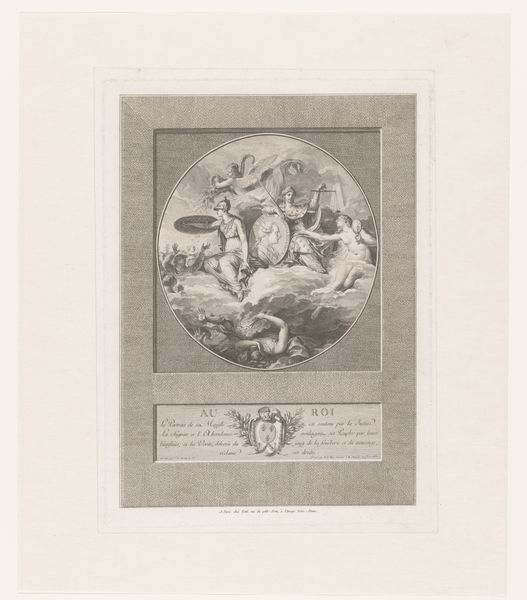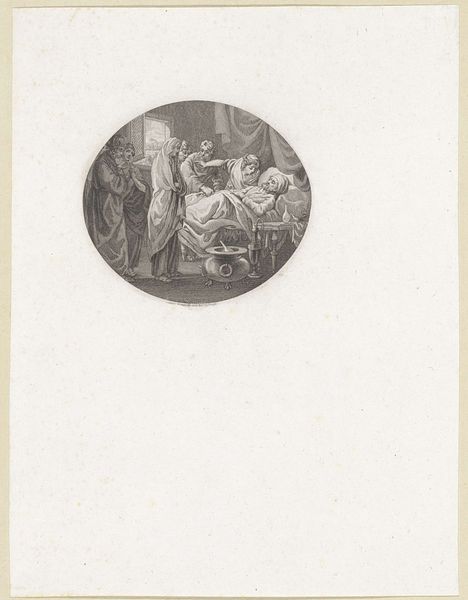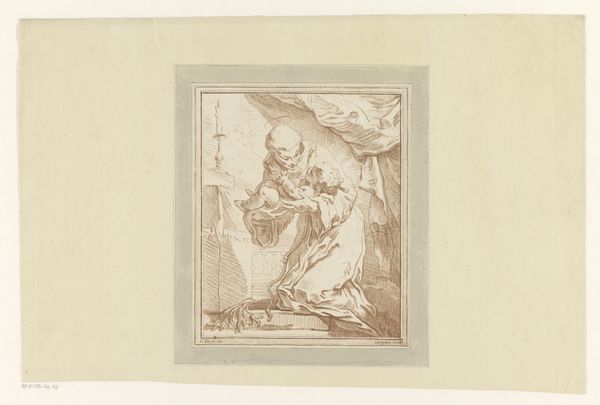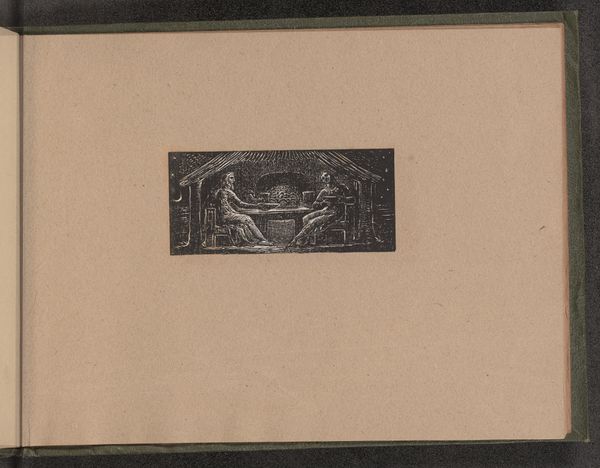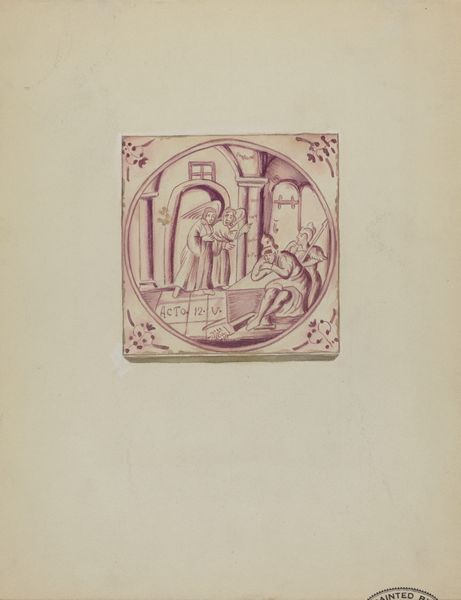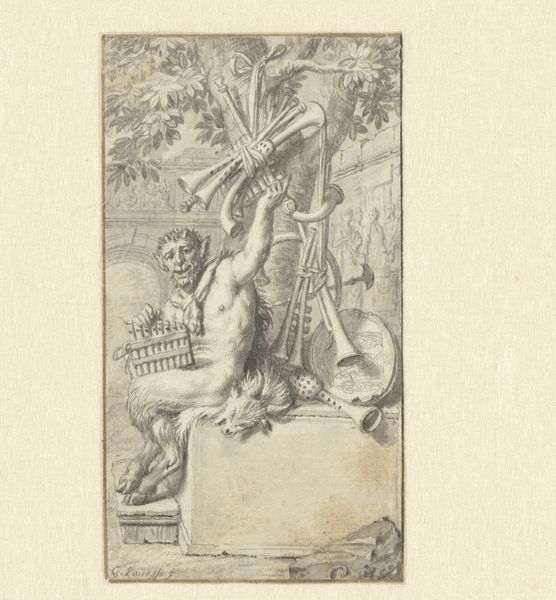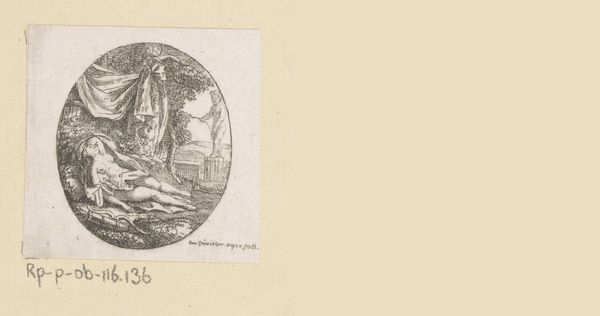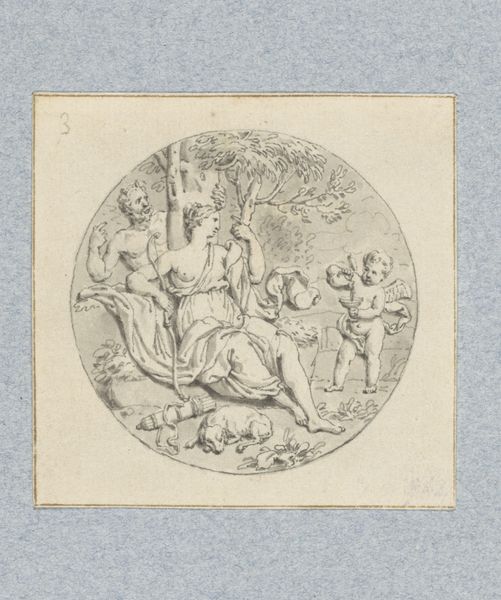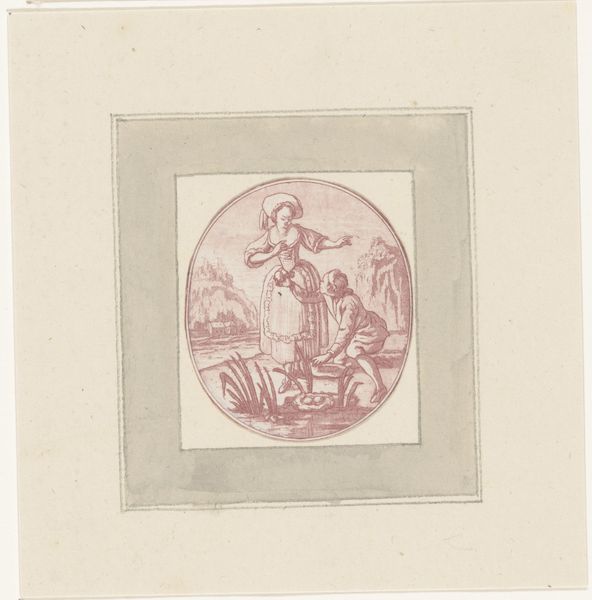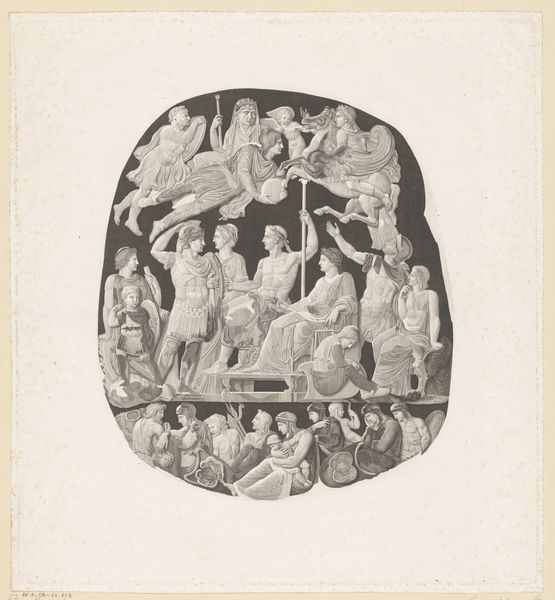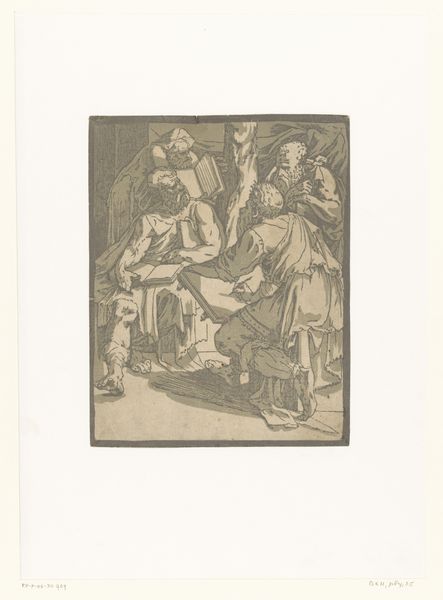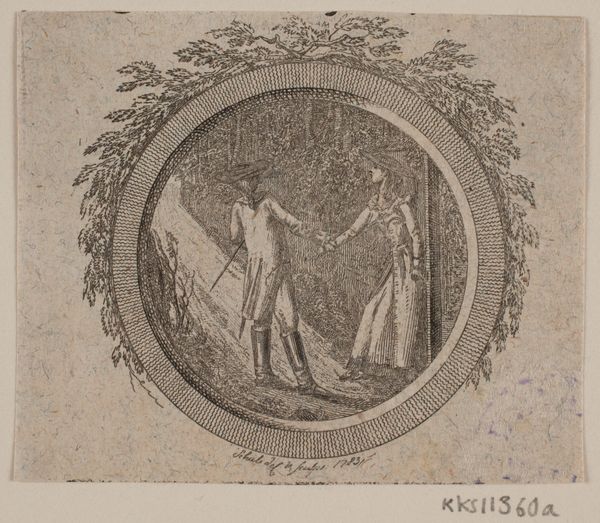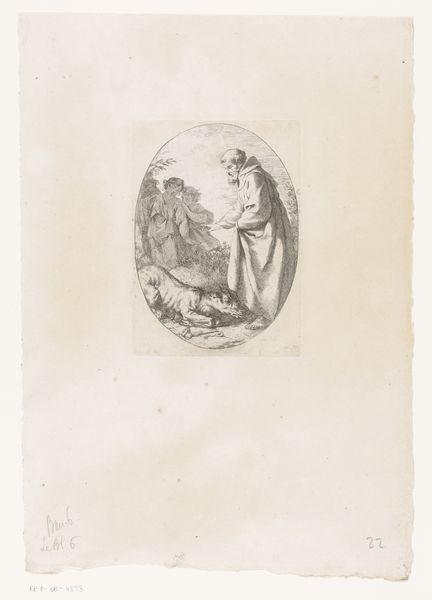
Fragment van een collage van uitgeknipte prenten, geplakt op blauw papier c. 1680 - 1720
0:00
0:00
Dimensions: height 120 mm, width 106 mm
Copyright: Rijks Museum: Open Domain
Editor: So, this is "Fragment of a Collage of Cut-out Prints, Glued on Blue Paper," dating from around 1680 to 1720. It's at the Rijksmuseum, and it seems to be by several different artists using printmaking techniques. The scene within the circular wreath feels very formal and staged. What jumps out at you? Curator: The wreath immediately draws my attention. Wreaths have been used throughout history to signify victory, honor, even cyclical time. But in this context, enclosing a scene of supplication before royalty, it seems to add an air of authority and even destiny to the rulers. It speaks to a very specific power dynamic. Editor: Destiny, that's interesting. I hadn't thought about it in terms of the wreath itself. What about the central scene? Curator: Note the architectural backdrop, very classical. These visual cues deliberately tie the rulers to historical concepts of power and legitimacy, like the Roman Empire. And consider the light—how it emphasizes their elevated position while leaving the supplicants in shadow. Even the act of kneeling carries deep psychological and cultural weight. Do you think this arrangement inspires feelings of admiration, perhaps even reverence, from its intended audience? Editor: I can definitely see the power dynamic. But I also wonder, given it’s a fragment, how the surrounding images on the original collage might have changed that message, or complicated it. Curator: Exactly! The beauty and frustration of fragments lies in this interpretive gap. Perhaps the juxtaposition created tension, questioning the unyielding power. What an insightful consideration, truly opening my perspective on this complex artwork.
Comments
No comments
Be the first to comment and join the conversation on the ultimate creative platform.
